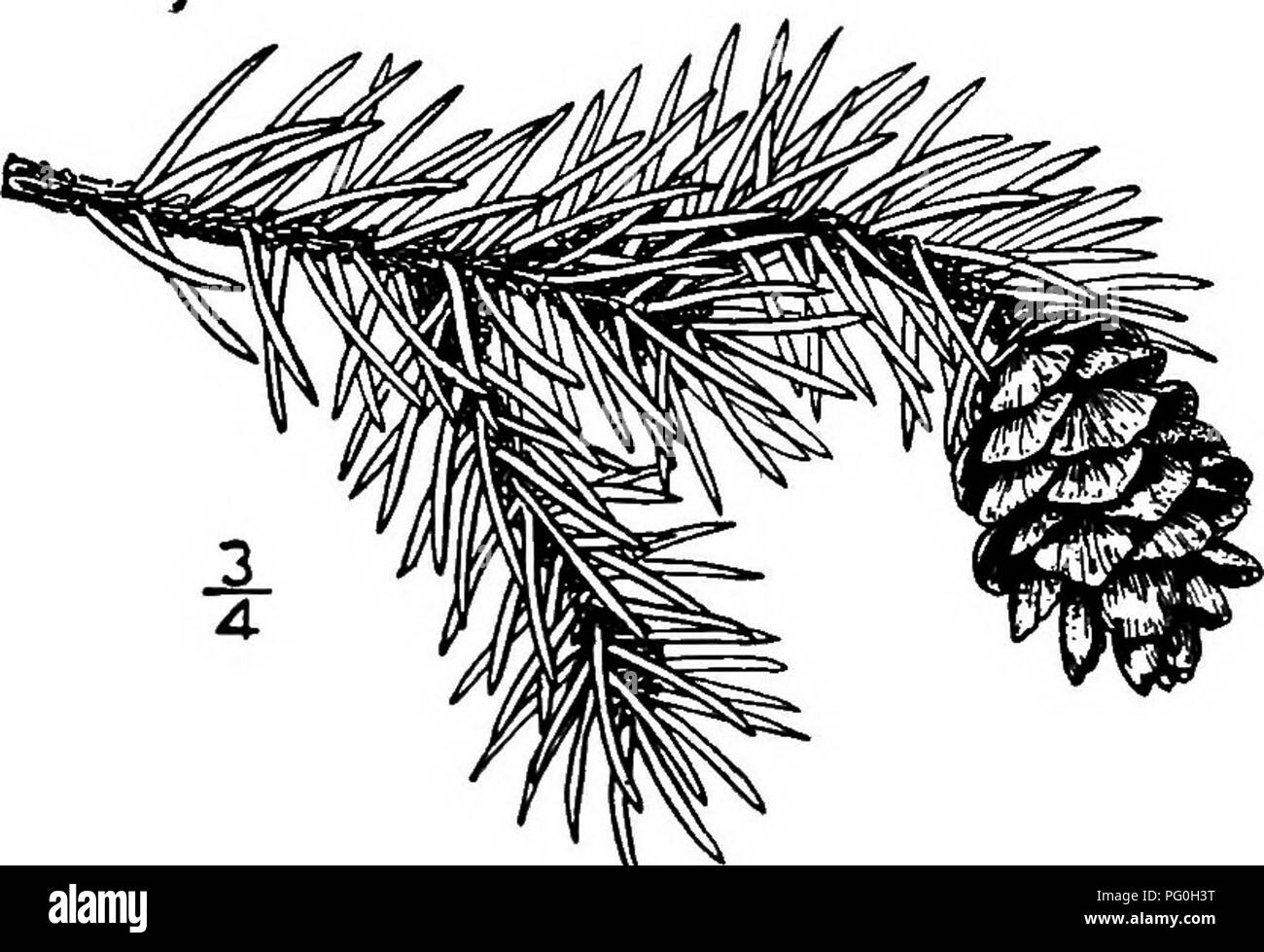. North American trees : being descriptions and illustrations of the trees growing independently of cultivation in North America, north of Mexico and the West Indies . Trees. 58 The Spruces sharply pointed, about 3 mm. long, their closely fitting light red-brown scales mi- nutely hairy. The 4-sided leaves are from 0.5 to 1.5 cm. long, somewhat nar- rowed toward the blunt tip, slightly incurved, standing outward in all directions from the branches; they are hght bluish or glaucous green, lighter on the upper surface with many stomata, shining beneath. The staminate flowers are oblong or cylindr

Image details
Contributor:
Central Historic Books / Alamy Stock PhotoImage ID:
PG0H3TFile size:
7.2 MB (360.9 KB Compressed download)Releases:
Model - no | Property - noDo I need a release?Dimensions:
1911 x 1308 px | 32.4 x 22.1 cm | 12.7 x 8.7 inches | 150dpiMore information:
This image is a public domain image, which means either that copyright has expired in the image or the copyright holder has waived their copyright. Alamy charges you a fee for access to the high resolution copy of the image.
This image could have imperfections as it’s either historical or reportage.
. North American trees : being descriptions and illustrations of the trees growing independently of cultivation in North America, north of Mexico and the West Indies . Trees. 58 The Spruces sharply pointed, about 3 mm. long, their closely fitting light red-brown scales mi- nutely hairy. The 4-sided leaves are from 0.5 to 1.5 cm. long, somewhat nar- rowed toward the blunt tip, slightly incurved, standing outward in all directions from the branches; they are hght bluish or glaucous green, lighter on the upper surface with many stomata, shining beneath. The staminate flowers are oblong or cylindric and reddish. The cones are ovoid, 2 to 3 cm. long, pointed at the end, rounded or narrowed at the base into a short, bent stalk, which is covered with persistent bracts; they are dull purplish brown when mature and often become nearly globular when the scales expand, remaining on the tree for many years; their scales are nearly orbicular, stiff, rounded, irregularly notched or entire; the seed is oblong, about 3 mm. long, dark brown, its wing pale brown and shining. The wood is soft, weak, coarse-grained, yellowish white with a specific gravity of about 0.52. It is seldom sawed into lumber except in the region of its greatest development, Manitoba, where it is utilized as the Red spruce is eastward. In cultivation it has proven a failure on account of losing its lower branches and otherwise becoming unsightly. Forms of this tree with large cones sometimes very closely resemble the preceding species. SOUTHERN SPRUCE —Picea austraUs Small Picea alba Chapman, not Link This occurs on summits and rocky slopes of mountains in Virginia and North Carolina. To determine whether it is really a dbtinct species requires further investigation, as it is imperfectly known. It differs from the Red spruce in its more slender, less hairy twigs with smoother ster- igmata, more slender, acute light green leaves and much smaller cones, which are said to fall off directly after shedding their s